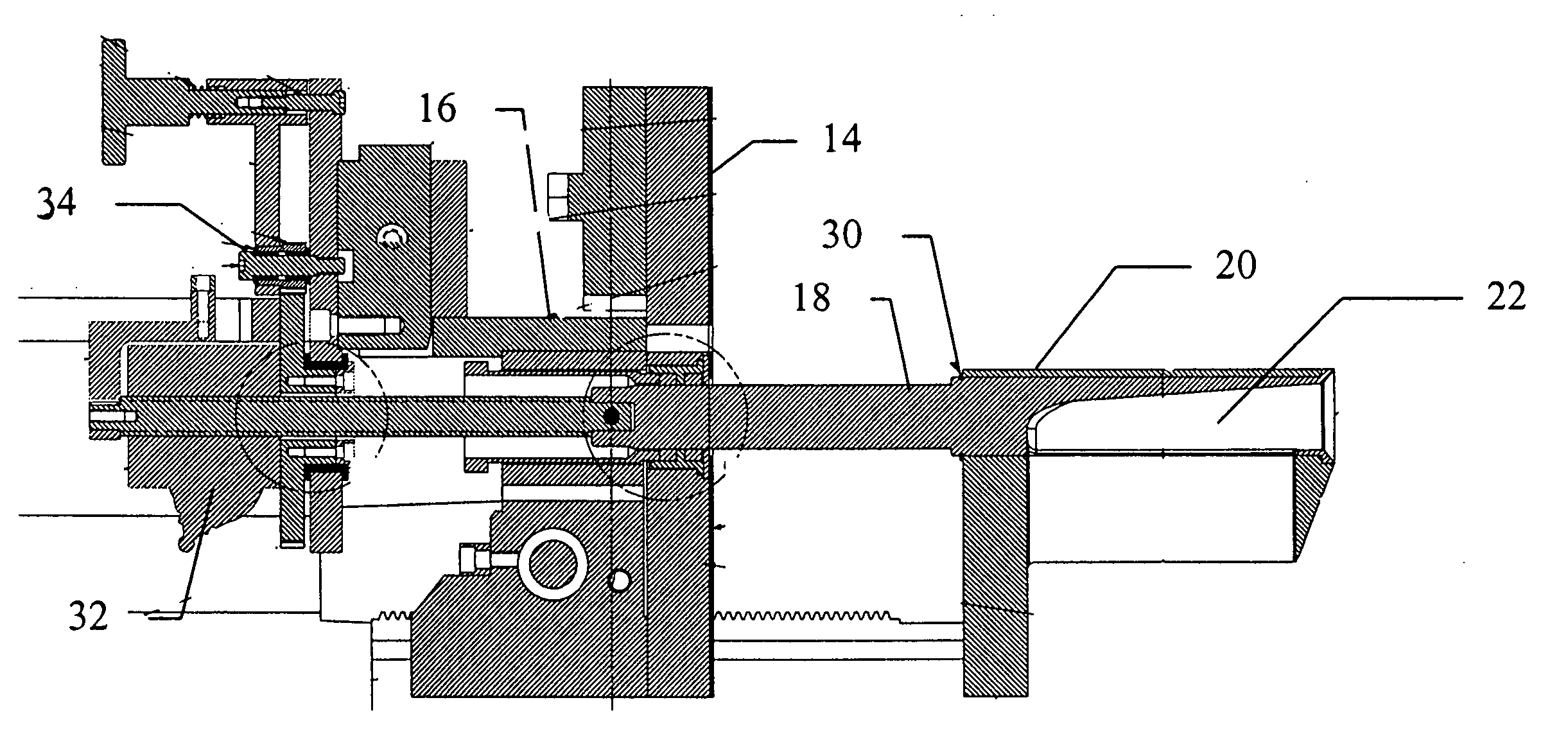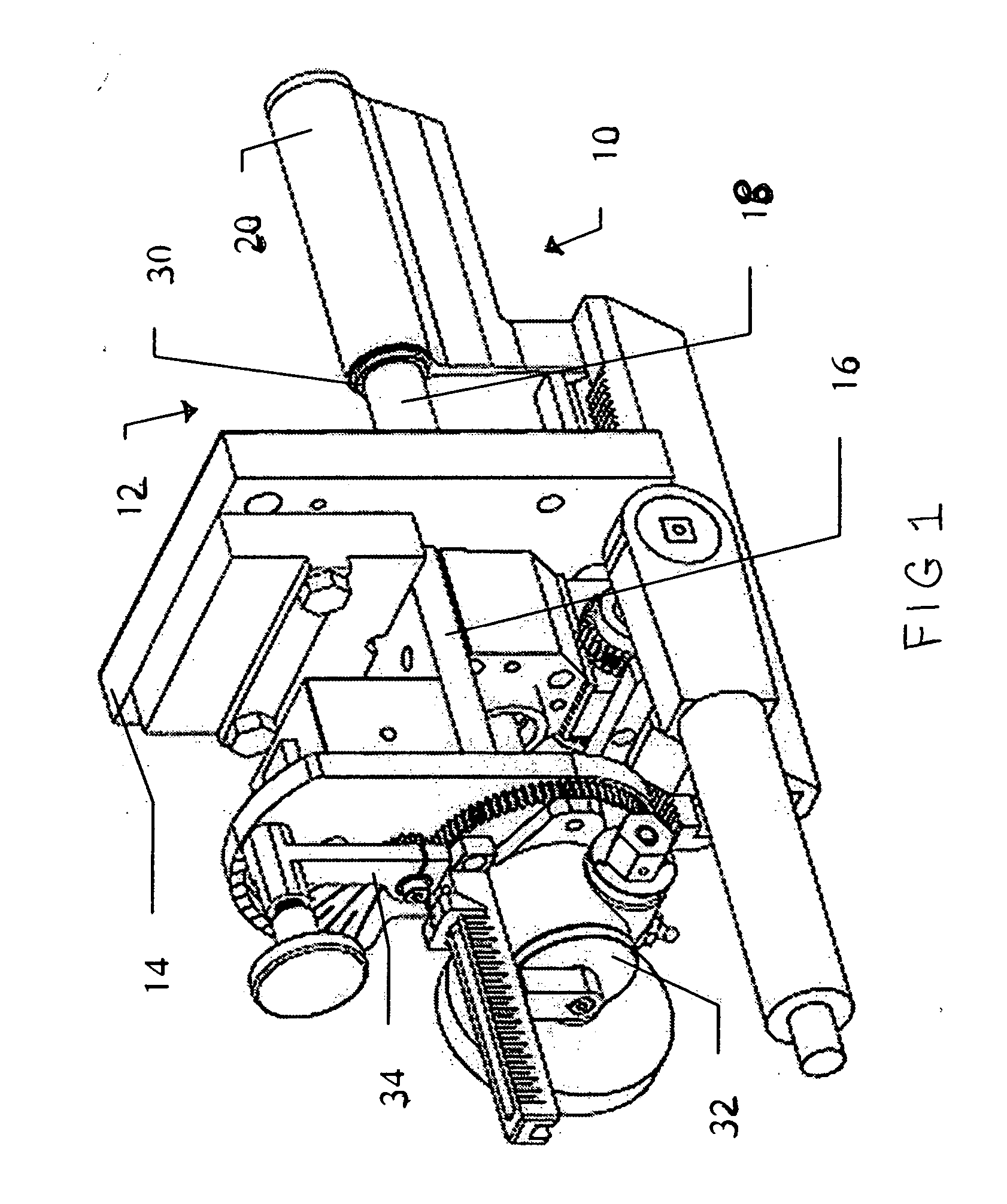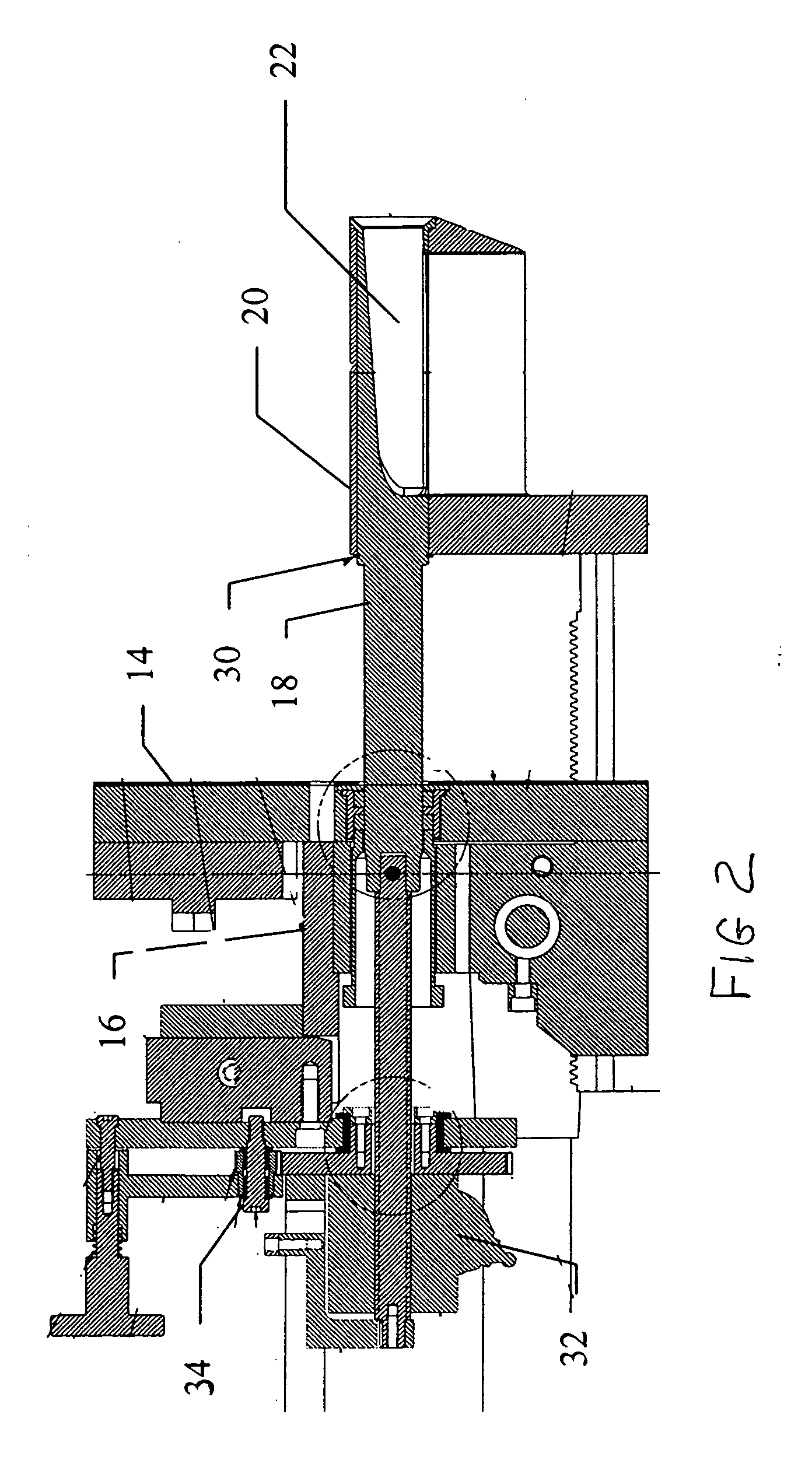Internal die deckle with flow control
a technology of flow control and die slant, which is applied in the direction of dough shaping, manufacturing tools, food shaping, etc., can solve the problems of non-uniform coating thickness at the edges of the coated material, non-uniform thickness, and non-uniform molten resin, so as to improve the flow velocity and residence time of resin and improve the effect of fine adjustment resolution
- Summary
- Abstract
- Description
- Claims
- Application Information
AI Technical Summary
Benefits of technology
Problems solved by technology
Method used
Image
Examples
Embodiment Construction
[0013] Referring to FIGS. 1-4, an apparatus 10 is illustrated for changing the width of an internal die cavity 12 to accommodate product width changes. The apparatus 10 illustrated effects only one edge of the product, it is to be understood that a second apparatus is required too at the other side edge of the product or material. The apparatus 10 includes a die end plate 14 having a front surface facing the internal die cavity 12, an opposed rear surface and defines an opening extending through the front and rear surfaces. An internal deckle mounting block 16 is attached to the rear surface of die end plate 14.
[0014] An internal deckle has a longitudinal axis, an inner deckle member 18 and an outer deckle member 20 and is mounted on mounting block 16. Inner deckle member 18 extends through the central opening of die plate 14 and defines a chamber 22 and a first longitudinal slot 24. Inner deckle member 18 has a first end portion engaging the mounting block 16 and is supported ther...
PUM
| Property | Measurement | Unit |
|---|---|---|
| cross width | aaaaa | aaaaa |
| dimensions | aaaaa | aaaaa |
| volume | aaaaa | aaaaa |
Abstract
Description
Claims
Application Information
 Login to View More
Login to View More - R&D
- Intellectual Property
- Life Sciences
- Materials
- Tech Scout
- Unparalleled Data Quality
- Higher Quality Content
- 60% Fewer Hallucinations
Browse by: Latest US Patents, China's latest patents, Technical Efficacy Thesaurus, Application Domain, Technology Topic, Popular Technical Reports.
© 2025 PatSnap. All rights reserved.Legal|Privacy policy|Modern Slavery Act Transparency Statement|Sitemap|About US| Contact US: help@patsnap.com



